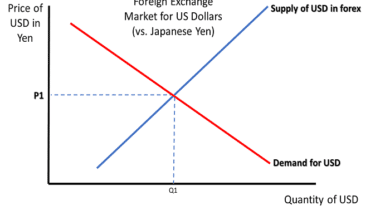
Introduction
Retirement accounts are essential for securing a comfortable and financially stable future. Understanding the different types of retirement accounts, their benefits, and how to maximize their potential can make a significant difference in your retirement planning. This comprehensive guide will delve into various aspects of retirement accounts, helping you make informed decisions to secure your financial future.
The Importance of Retirement Accounts
Retirement accounts play a crucial role in ensuring financial security during retirement. These accounts offer various tax advantages and long-term growth opportunities, making them an indispensable part of any retirement strategy. By understanding the importance of retirement accounts, you can better appreciate the need to start saving early and consistently.
Types of Retirement Accounts
There are several types of retirement accounts, each with its own set of rules, benefits, and eligibility requirements. The main types include:
- Traditional IRA: Offers tax-deductible contributions and tax-deferred growth.
- Roth IRA: Contributions are made with after-tax dollars, but withdrawals are tax-free.
- 401(k): Employer-sponsored plan with tax-deferred contributions and potential employer matching.
- Roth 401(k): Combines features of a 401(k) and Roth IRA, with after-tax contributions and tax-free withdrawals.
- SEP IRA: Simplified Employee Pension plan for self-employed individuals and small business owners.
- SIMPLE IRA: Savings Incentive Match Plan for Employees, suitable for small businesses.
Traditional IRA: A Foundation for Retirement Savings
A Traditional IRA (Individual Retirement Account) is one of the most common retirement accounts. Contributions to a Traditional IRA are typically tax-deductible, and the investments grow tax-deferred until retirement. This means you won’t pay taxes on your earnings until you withdraw them, usually after age 59½. Traditional IRAs are a foundational element of retirement planning, offering significant tax advantages and flexibility.
Roth IRA: Tax-Free Growth and Withdrawals
A Roth IRA is an excellent option for those who anticipate being in a higher tax bracket during retirement. Contributions to a Roth IRA are made with after-tax dollars, but the investments grow tax-free, and qualified withdrawals are also tax-free. This makes Roth IRAs an attractive choice for long-term retirement savings, providing tax diversification and future tax-free income.
401(k): Employer-Sponsored Retirement Savings
A 401(k) plan is a retirement account offered by many employers. It allows employees to contribute a portion of their salary on a pre-tax basis, reducing their taxable income for the year. Many employers offer matching contributions, effectively providing free money to employees. The contributions and earnings grow tax-deferred until withdrawal, making 401(k) plans a powerful tool for building retirement wealth.
Roth 401(k): Combining Features of 401(k) and Roth IRA
A Roth 401(k) combines the features of a traditional 401(k) and a Roth IRA. Contributions are made with after-tax dollars, but the earnings and qualified withdrawals are tax-free. This account is particularly beneficial for those who want the tax advantages of a Roth IRA but have higher contribution limits similar to a traditional 401(k). It provides flexibility and tax diversification in retirement planning.
SEP IRA: Ideal for Self-Employed and Small Business Owners
A SEP IRA (Simplified Employee Pension) is designed for self-employed individuals and small business owners. It allows for higher contribution limits compared to traditional and Roth IRAs, making it an attractive option for those with variable income. Contributions are tax-deductible, and the investments grow tax-deferred until retirement, offering significant tax advantages for business owners.
SIMPLE IRA: Savings Incentive Match Plan for Employees
A SIMPLE IRA (Savings Incentive Match Plan for Employees) is tailored for small businesses. It is easy to set up and administer, with lower contribution limits than a SEP IRA but with mandatory employer contributions. This plan is ideal for small businesses looking to provide retirement benefits to their employees while enjoying tax advantages and simplicity.
Maximizing Contributions to Retirement Accounts
Maximizing contributions to your retirement accounts is essential for building a robust retirement fund. Each type of retirement account has annual contribution limits set by the IRS. Understanding these limits and striving to meet them can significantly boost your retirement savings. Additionally, taking advantage of employer matching contributions in 401(k) plans can provide an extra boost to your savings.
Diversifying Investments in Retirement Accounts
Diversification is key to managing risk and optimizing returns in your retirement accounts. By spreading your investments across various asset classes, such as stocks, bonds, and real estate, you can protect your portfolio from market volatility. Diversifying within your retirement accounts helps ensure a balanced approach to growth and stability, aligning with your retirement goals.
The Role of Tax Planning in Retirement Accounts
Tax planning is a critical aspect of managing retirement accounts. Different accounts offer various tax advantages, and understanding these can help you optimize your retirement strategy. For example, contributing to a Roth IRA can provide tax-free income in retirement, while a Traditional IRA offers tax-deferred growth. Balancing contributions between different types of accounts can provide tax flexibility and minimize your tax burden in retirement.
Withdrawal Strategies for Retirement Accounts
Developing a withdrawal strategy for your retirement accounts is essential to ensure a steady income stream and minimize taxes in retirement. Required Minimum Distributions (RMDs) begin at age 72 for Traditional IRAs and 401(k) plans, and failing to take RMDs can result in hefty penalties. Planning your withdrawals strategically, such as taking distributions from tax-deferred accounts first, can help manage your tax liability and extend the longevity of your retirement savings.
Conclusion
Retirement accounts are a cornerstone of financial planning, offering various tax advantages and growth opportunities to secure your future. By understanding the different types of retirement accounts, maximizing contributions, diversifying investments, and planning your withdrawals strategically, you can build a robust retirement portfolio. Start early, stay informed, and consult with financial advisors to make the most of your retirement accounts and enjoy a financially secure retirement.
FAQs
Q1: What are the main types of retirement accounts?
A1: The main types of retirement accounts include Traditional IRA, Roth IRA, 401(k), Roth 401(k), SEP IRA, and SIMPLE IRA, each offering unique benefits and tax advantages.
Q2: How does a Roth IRA differ from a Traditional IRA?
A2: Contributions to a Roth IRA are made with after-tax dollars and qualified withdrawals are tax-free, while Traditional IRA contributions are tax-deductible and withdrawals are taxed as income.
Q3: What is a 401(k) plan?
A3: A 401(k) is an employer-sponsored retirement account allowing employees to contribute pre-tax income, often with employer matching, and grows tax-deferred until withdrawal.
Q4: Who is eligible for a SEP IRA?
A4: A SEP IRA is designed for self-employed individuals and small business owners, allowing higher contribution limits and offering significant tax advantages.
Q5: What is the benefit of diversifying investments in retirement accounts?
A5: Diversifying investments within retirement accounts helps manage risk, optimize returns, and protect your portfolio from market volatility, ensuring a balanced approach to growth and stability.




